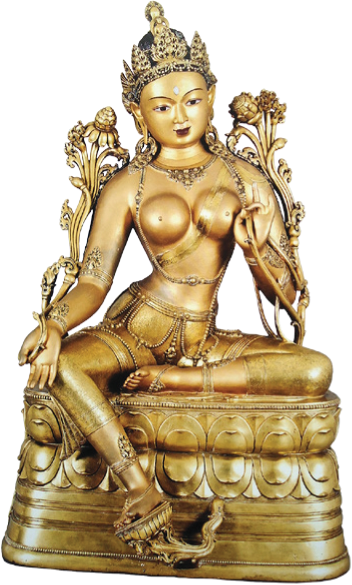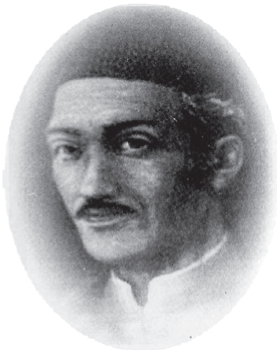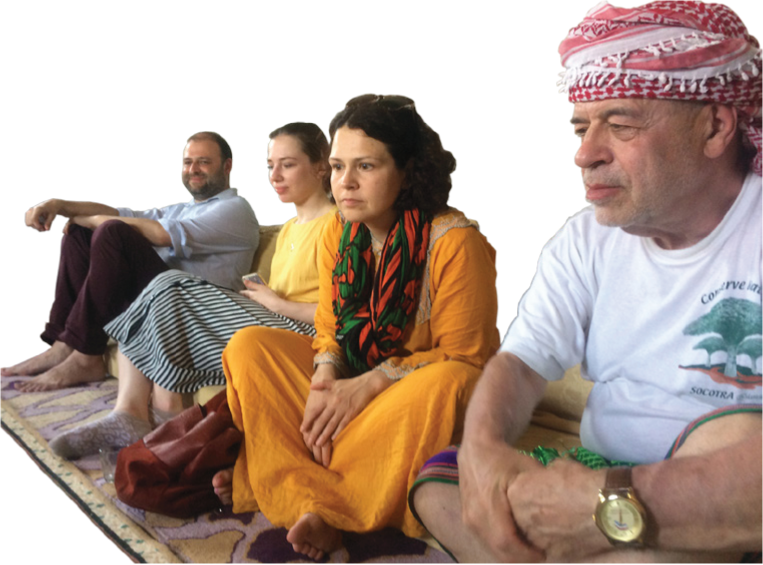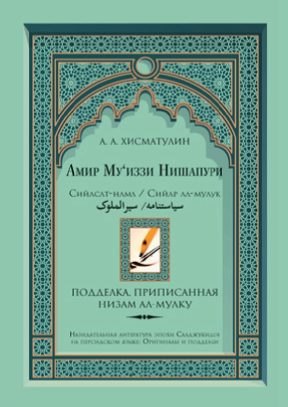HISTORY OF THE EAST. Universal history 
This article offers a method for narrative analysis regarding the stories told in the Biblical books of Samuel and Kings. This method provides an opportunity for drawing some preliminary conclusions about the historicity of the events narrated. Key parameters are 1) the high number of small details, which is an evidence that the narrator was close to the event; 2) the narrator’s emotional involvement, which may hint to his personal participation or that of the people from his inner circle in the events described. Stories which comprise a large number of common places, on the contrary, seem to be less historically accurate. As the result, one can subdivide the narration flow as found in the Books of Samuel and Kings into several blocks, which represent different levels of historical actuality and precision.
(S. A. Polkhov - Translation into Russian from late medieval Japanese, comments and introduction)
The publication provides a commented translation into Russian of the book VII of Shinchō-kō ki chronicle. The book VII narrates about war between Oda, Tokugawa houses and daimyo Takeda Katsuyori and about Oda Nobunaga acquiring the piece of the fragrant tree Ranjatai from imperial treasury in Todaiji monastery. The book also contains the description of Nobunaga military campaign against Nagashima Ikko-ikki. The article continues the series of translations of books of Shinchō-kō ki, previously published by the author.
In continuation of the study of the art heritage of Zanabazar (1635–1723), we have traced the connection between the textual and art systems of the Buddhist cult ofTaragoddess. This goddess was of particular importance for the master Zanabazar. In his turn, Zanabazar was recognized as the incarnation of the great Tibetan scholar Jetsun Taranatha (1575–1634), whose name means “Protected byTara”. Undur-Gegen Zanabazar had deep spiritual relationship with the Savior Goddess both from his previous incarnations as well as directly transmitted by his teachers, especially the IV Panchen Lama Lobsan Choiky Gyaltsen (1570–1662). The article deals with outstanding sculptural images of Tara by Dzanabazar and also by the artists of earlier times and by the followers of his style who came fromSri Lanka,Nepal,Tibet,Mongolia, Buryatia. The actual objects are currently preserved in various collections throughout the world. Among them that of the British Museum in London, the Metropolitan and the Rudin Museums in the United States, the Potala in Lhasa, the State Hermitage and the Russian Ethnographical Museum in St. Petersburg and Mongolian museums of Ulaanbaatar. Specific examples show how the canonical Buddhist standards of iconography were implemented under the influence of different regional ethnic craft traditions. The works by famous Buddhist artists, such as Sonam Gyaltsen (16th cent.), Choiing Dorje (1604–1664) as well as little-known Buryat masters of the late 19th century were used to compare with the masterpieces by Zanabazar.
LITERATURE OF THE EAST. Literature of the peoples of foreign countries 
The article deals with one of the episodes regarding the British preparation measurements for the Java invasion in 1811. It is mentioned in extenso in the memoirs of the Malay writer Abdullah bin Abdulkadir Munshi (1796/7–1854). The author mentions a mission dispatched to Java by the British colonial administrator T. S. Raffles. He masterminded the invasion in order to gain support from the local rulers. The keypoint of this episode is the exposure of the alleged traitor the Crown Prince of the Siak Principality, Tengku Pangeran Sukma Dilaga (aka Sayyid Zain) who happened to be the Head of the mission. The story about the betrayal originated from the Javanese prince, the participant in the mission of Sayyid Zain. The story was considered to be true and therefore included into the memoirs by their author Abdullah ibn Abdulkadir Munshi. The author of the article offers an analysis of the documentary evidences and on their basis argues the authenticity of the original description by Sayyid Zain and discusses various reasons, which caused its oigin.
PHILOSOPHY OF THE EAST. Philosophy of religion and religious studies 
The article is the first part of a study regarding the problem of the re-edition of Aristotle’s Categories in the work “The Healing” (ash-Shifā’) by the greatest philosopher of classical Islam, Ibn Sina (Avicenna; d. 1037). It shows the ways and approaches by Avicenna to revisit the epistemological status of the Categories, as well as his approach to “ontologize” and “delogicisize” the problems of categories. Also, the authors provide an analysis of how Avicenna re-worked the Aristotelian prologue (chapters 1–4), sometimes is referred to as the Pre-Predicamenta. The analysis includes as follows: semantics of various types of words, four-fold division (“ontological square”), ten-fold division and its justification.
PHILOSOPHY OF THE EAST. Philosophical Anthropology, Philosophy of Culture 
Among the concepts often referred to by tantric thought, an important place is occupied by the spiritual “ignorance” – avidyā, or ajñāna. It is considered as the main cause of saṃsāra (the complex of births and deaths of an individual or of all live beings as a whole. This is usually interpreted as the “world of suffering”). The ignorance causes other bonds, which enslave a human individual, like māyīyamala and kārmamala. The avidyā not only determines the ways of knowledge by beings, but also the very their lifestyle. The ignorance is caused by the activity of the higher Deity, who “plays” with himself in the process of cosmoand anthropogenesis. Ignorance is egocentrism, duality, fragmented, incomplete, limited and at the same time ordinary knowledge, which we use constantly in our lives. The ignorance is juxtaposed to the “unawakened” (“unenlightened”) state of consciousness. As humans, being in the grip of ignorance, we misinterpret the true nature of reality. There are various classifications of spiritual ignorance. For example, Abhinavagupta distinguishes two varieties of ignorance: one of them is associated with intelligence, and the other with the category of “Self ”. The Maheśvara Tantra mentions three types of ignorance that are associated with three levels of the Absolute and three states of consciousness. The notion of ignorance in Hindu Tantrism is both general and specific.
LITERATURE OF THE EAST. Folklore studies 
In the Autumn of 2019, the present author, in collaboration with Sarali Gintsburg and Vitaly Naumkin, was able to collect, decipher and analyze 18 lullabies in the Modern South Arabian language Soqotri (Island of Soqotra, Gulf of Aden, Yemen). Besides numerous text samples, the article contains a brief history of the previous research, a systematic comparison between the newly gathered texts and those published by David Heinrich Müller in 1905, as well as some comparative remarks pertaining to the Old Babylonian lullabies – the earliest known specimens of this genre.
LITERATURE OF THE EAST. Theory of literature. Textology 
The article discusses the problem of author’s interpretation of conventional patterns of the romance “genre” in the Tale about daughter of Ka‘b from the Ilahinameh by Farid ad-Din ‘Attar. In particular, it deals with the so-called “standard situations” (e.g. falling in love without seeing the partner, exchange of love letters or poems, etc.) as well as key components of structure (dialogues, monologues, descriptive portraits of main heroes). The analysis is based on the comparison of canonic elements of romance narrative in the Tale about daughter of Ka‘b with their analogies in the texts of the same “genre” of the earlier periods, including the “standard” romances by Nizami. This research reveals the influence of the ‘Uzri lyrical and narrative tradition with regard to the structure of plot of the “romance” and the ways of building up and composition of the features of the chief personage. On this background were analyzed the literary functions of the “inferior” personages, e.g. the nurse (or wet-nurse). The article is based on the translation and commentary of the Story about daughter of Ka‘b by Layla G. Lahuty.
Two books have been published to date in the book series – the Persian Mirrors for Princes Written in the Saljuq Period: Originals and Fabrications. They are: Amir Mu‘izzi Nishapuri. The Siyasat-nama/Siyar al-muluk: A Fabrication Ascribed to Nizam al-Mulk (2020) and The Writings of Imam al-Ghazali (2017). Altogether, these books examine seven medieval texts: the Siyasat-nama/Siyar al-muluk, the Zad-i Akhirat, the Nasihat al-muluk, pt. 1, the Faza’il al-anam min rasa’il Hujjat al-Islam, the Ei Farzand/Ayyuha al-walad, the Pand-nama, and the Nasihat al-muluk, pt. 2. Four of the seven texts belong to the category of deliberate fabrications or the texts with false attribution, compiled with quite specific goals and for specific target audience.
1. The results of the historical, codicological, and textual analysis reveal that the Siyasat-nama/Siyar al-muluk (The Book of Government/The Vitae of Rulers) was compiled by Muhammad Mu‘izzi Nishapuri, the Head of poets department under the Saljuqid ruler Malik-shah. Subsequently, he ascribed it to the murdered Nizam al-Mulk in order to be appointed to a position at the Saljuqid court.
2. The last three texts published in the second book and ascribed to al-Ghazali are forgeries as well. The most famous of them is the Ayyuha al-walad (O Child). This text was initially written in Persian under the title Ei farzand, however, one or two generations after the death of Muhammad al-Ghazali. For its compilation were used: two genuine letters letters by Muhammad al-Ghazali; the ‘Ayniyya – letter by his brother Ahmad al-Ghazali to his famous disciple ‘Ayn al-Qudat al-Hamadani; and the text taken from ‘Ayn al-Qudat’s own letter. Later, the compiled text was translated into Arabic and began to circulate under the title Ayyuha al-walad.
3. The third book is going to comprise two authentic texts: the Qabus-nama (The Book of Qabus) by Kay Kawus b. Iskandar b. Qabus and the Chahar maqala/Majma‘ al-nawadir (Four Discourses/Miscellany of Rarities) by Nizami ‘Aruzi Samarqandi. If possible, the Fustat al-‘Adala fi-Qawa‘id al-Saltana (A Tent of Justice In the Rules of Sultanate) compiled by Muhammad al-Khatib in 683 AH/1284-5 AD will be also included in this book. For the publication will be used the unique manuscript preserved in the National Library of France (BnF, Suppl. Turc 1120).
The article offers a review of the texts included in the series and deals with the problem of literary forgeries and fakes in medieval Islamic literature, their types as well as the ways of their identification.
CHRONICLE. Conference report 
On October 25, 2019, the Meeting “Peoples meet inYemen” was held at theInstituteofOriental Manuscriptsof theRussianAcademyof Sciences. It was dedicated to the memory of the outstanding Russian scholars of the East Pyotr Afanasievich Gryaznevich (19.IX.1929–12.II.1997) and Avraam Grigorievich Lundin (25.XII.1929–12.X.1994). The conference was attended by 13 participants fromMoscowandSt. Petersburg, who summarized the achievements of P. A. Gryaznevich and A. G. Lundin in the field of Ancient and Medieval Yemen studies, as well as other aspects of Arabic studies. The review provides a list the talks given by the participants
The article provides a report about the George Roerich Annual International Meeting, the conference dedicated to the memory of Yu. N. Roerich. The papers read offer a coverage of a rich selection of topics as well as chronology and geography. However, the papers had in common that the research subjects they dealt with, did all pertain to the interests of the outstanding scholar George Roerich. The speakers were invited to give an answer to the question regarding the phenomen of the genesis of meanings in culture. This provided sufficient ground for a wide interdisciplinary discussion of the theoretical problems regarding generating texts and formation of culture as a philosophical phenomenon.
ISSN 2687-0738 (Online)

























